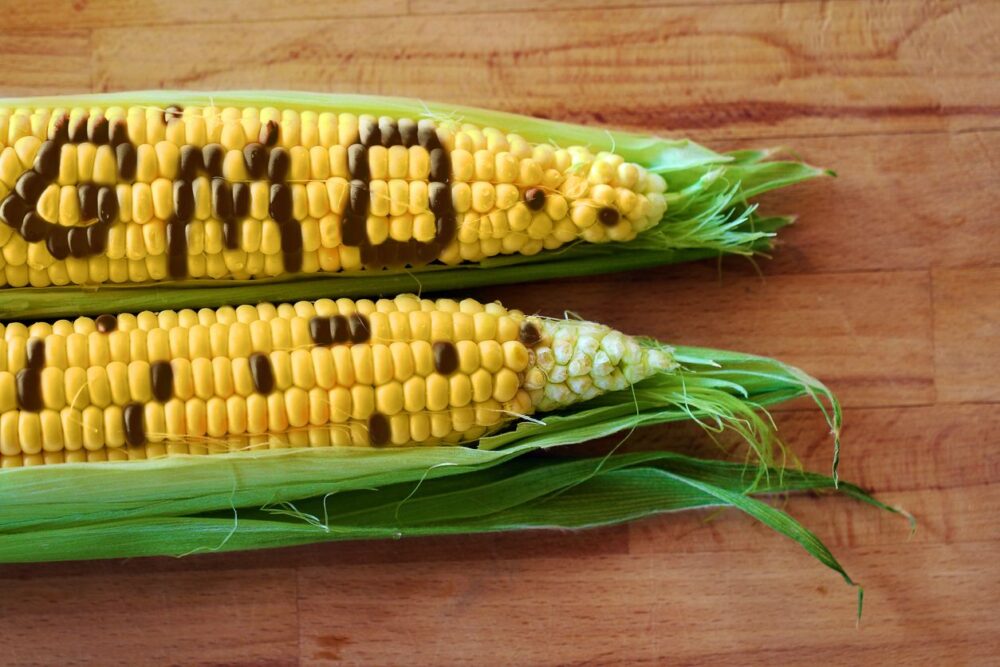Low-income earners will most likely be the ‘testers’ for genetically modified crops in Kenya, and possibly other African nations, Emmanuel Atamba, an agricultural economist and CEO of APSID Consulting, recently argued.
“Who will be the consumers of GMO? We are creating a situation which is going to add another layer of inequality.”
Atamba was debating the role of genetically modified food in food security at the 10th Sankalp Africa Summit.
The discussion followed the lifting of a decade-long ban on the cultivation and importation of GMO crops in Kenya, a move that has elicited mixed responses from its citizens and policymakers. The ban was lifted as a food security measure as Kenya faces increasing climate pressures such as drought, which GMO technology can help to alleviate by developing crops with drought resilience. More abundance lowers costs.
Atamba’s argument was that richer consumers will be able to afford organically grown food and will therefore be less likely to consume the cheaper GMO-based alternatives; Atamba, also a farmer, added that lifting the ban was a business decision and not an avenue for food security.
The only solution?
“Why is GMO prioritized so much as the only solution? Because it is not,” he remarked.
Other participants in the session, which was structured as a debate between pro and anti-GMO champions, albeit with Atamba the only anti-GMO panelist, responded that they do no think GMO technology is the only tool in the toolbox and that it is not being positioned that way.
“We can’t totally take the GMO route but we need a combination of solutions,” said Ritika Sood, a partnerships and marketing lead of the Sprout Platform at Mercy Corps AgriFin, adding that nations can adopt both GMO and soil regeneration efforts in a bid to combat food insecurity amid a drought crisis.
“The issues of agriculture are many and I’m addressing just one of the issues as a scientist. Somebody else is addressing fertilizers, somebody else is addressing farming systems,” added Douglas Watuku Miano, an Associate Professor at the Department of Plant Science and Crop Protection at the University of Nairobi who believes a basket of solutions is needed in addressing challenges in agriculture.
Over-generalizing GMOs
Professor Miano expressed frustration about all the generalizations made about GMO technology, which he says creates misconceptions about their use. The umbrella term does not take into account the specific circumstances and use cases, which involve numerous different organisms and genetic profiles. A crop genetically engineered to withstand drought is very different from one engineered to be resistant to pests, for example.
From a safety standpoint they are all quite separate too, added Dr. Roy Mugiira, CEO of the National Biosafety Authority. Quipping that there’s “no conglomerate known as GMOs” he said that Kenya’s biosafety authority conducts separate safety assessments and tests on different types of genetically engineered crops so it is inappropriate to declare that GMOs as a whole are either safe or unsafe.
“Technology is not coming to replace existing systems. It targets a specific purpose and should be subjected to tests to minimize risk,” added Miano.
Testing specifics
Dr. Mugiira offered some detail into how GMO foods are tested for safety and urged for more confidence in Kenya’s biosafety authority while admitting that more work needed to be done on communicating with consumers and policymakers on how genetic modification works and manifests in the natural world.
“What we do to assess the safety of these crops…is we take modified and non-modified crops and run a chemical composition analysis to establish substantial equivalence. We then isolate the protein that’s adding benefit to the crop — for example the one responsible for pest resistance — and subject it to an analysis to determine whether it’s toxic or causes allergies,” he explained.
Other tests look at whether the crops are carcinogenic, can cause damage to other non-targeted organisms, and whether they have the potential to become a superweed among others.
With this testing, the Biosafety Authority even managed to get Bt Cotton — a genetically modified strain of cotton that is resistant to the common pest bollworm — approved by the government during the national GMO ban.
Mugiira said he welcomed feedback from cotton farmers.
Saving seeds
A major bone of contention across the GMO debate globally is that of seed sovereignty, which Akamba brought up; particularly the idea that genetically modified crops do not produce viable seeds and therefore farmers have to continuously keep buying new seed each year. That is often true, but for another reason. Genetic use restriction technology (GURT), which aims to prevent seeds from germinating (sprouting) was patented in the 1990s by the US government and licensed by commercial companies including Monsanto but reportedly never shown to work reliably in practice.
The reason farmers are unable to plant saved seed from GM crops is that they typically agree not to under contractual agreement with their seed supplier. Seed companies certainly benefit from repeated sales but there is also a quality control part of the argument; the desired genetics do not necessarily transfer from one generation to the next, argued Miano.
“The reason why we don’t advocate that farmers don’t use the seeds again, GMO or non-GMO under conventional breeding, is because the viability goes down if it’s not a variety that’s supposed to be cross-pollinated. If you want to get the benefit, use the first crop, you can still go to the second and third crop but the value will go down and that’s the nature of technology.”




